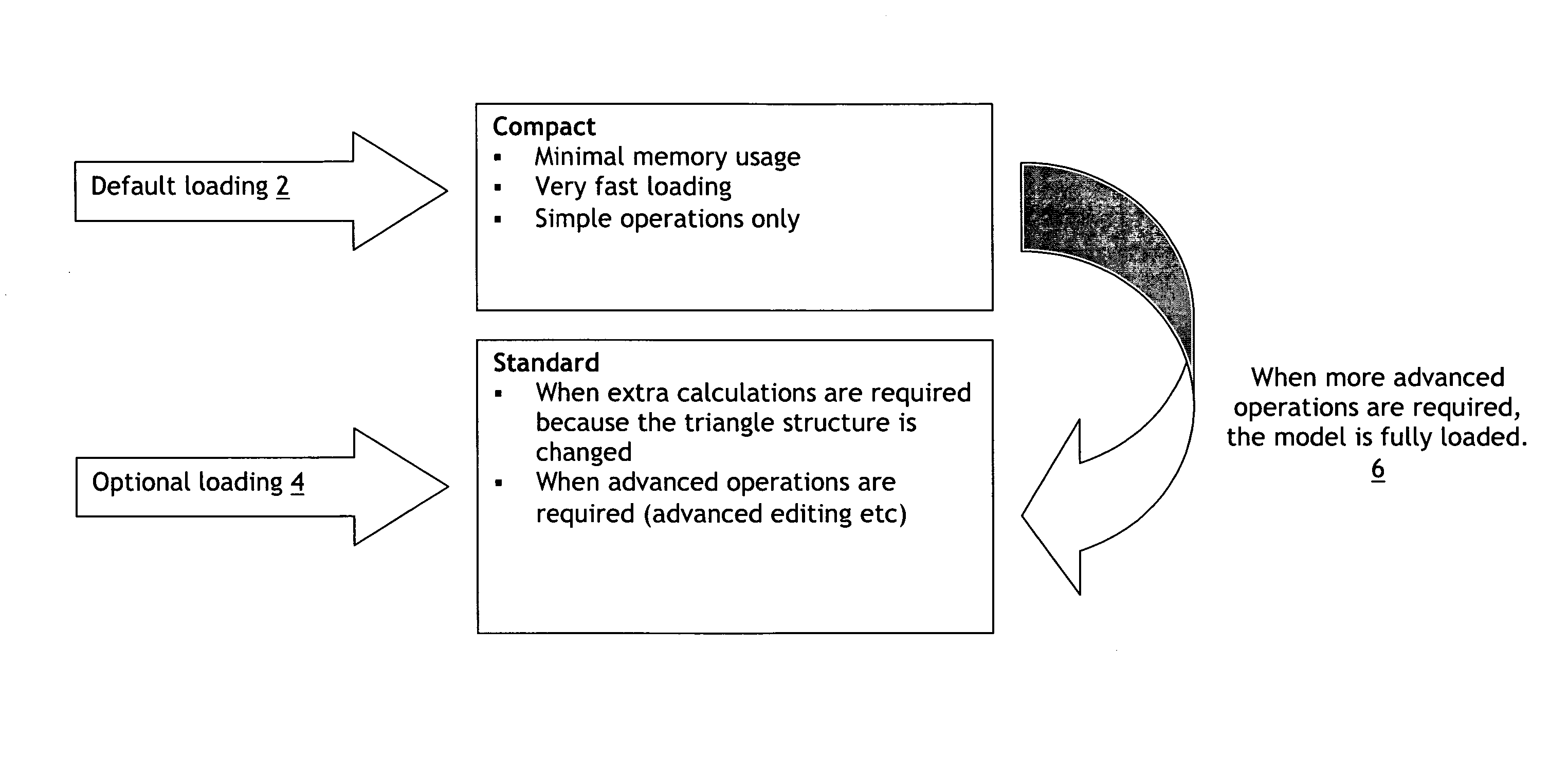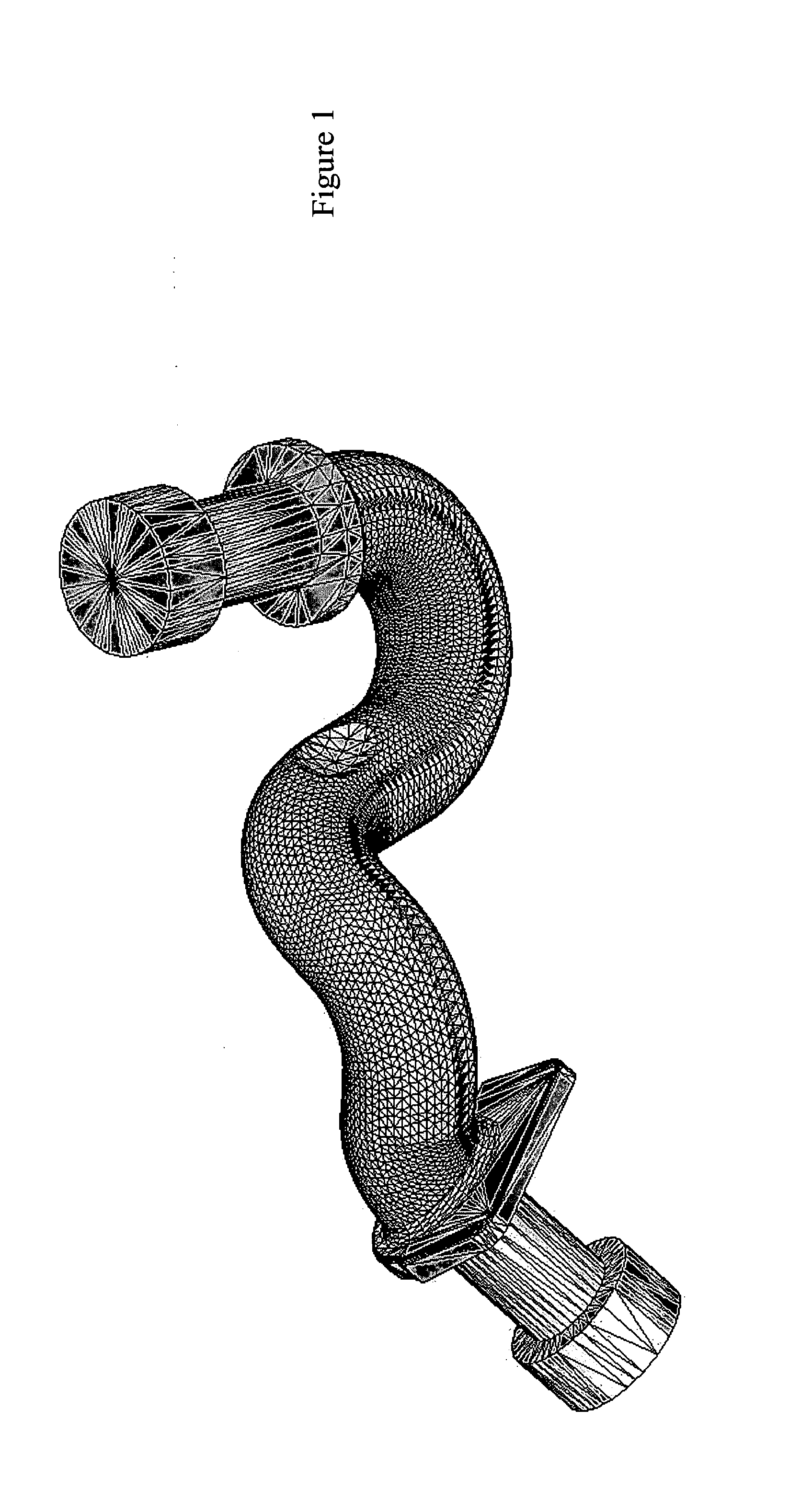Hybrid data structures for graphics programs
a graphics program and data structure technology, applied in the field of three-dimensional software graphics programs, can solve the problems of consuming a lot of memory, application working with large amounts of data sometimes suffering from performance loss, and the 3d geometry of the 3d model is not flexible enough to make changes, etc., to achieve the effect of improving speed
- Summary
- Abstract
- Description
- Claims
- Application Information
AI Technical Summary
Benefits of technology
Problems solved by technology
Method used
Image
Examples
embodiment
PREFERRED EMBODIMENT
[0093] As indicated above, although the present invention can be extended to more different structures, as a preferred embodiment a scheme of 3 different memory structures is proposed.
[0094] These three memory structures are:
[0095] A “compact” data structure that holds all the necessary data, e.g. in RAM, to show an object to the user, e.g. in 3D representation of a first resolution. Only simple viewing operations are possible, e.g. no modifications which involve changes in the polygonal structure. This data structure can be of the type shown in FIG. 4.
[0096] A “rich” data structure that reserves RAM for much more extra information such as connectivity data. This extra information can allow the programmer to write algorithms in a much more efficient way, e.g. when extra calculations are required because the polygonal structure is changed or when advanced operations are required such as advanced editing. The resolution remains as for the compact data structure....
PUM
 Login to View More
Login to View More Abstract
Description
Claims
Application Information
 Login to View More
Login to View More - R&D
- Intellectual Property
- Life Sciences
- Materials
- Tech Scout
- Unparalleled Data Quality
- Higher Quality Content
- 60% Fewer Hallucinations
Browse by: Latest US Patents, China's latest patents, Technical Efficacy Thesaurus, Application Domain, Technology Topic, Popular Technical Reports.
© 2025 PatSnap. All rights reserved.Legal|Privacy policy|Modern Slavery Act Transparency Statement|Sitemap|About US| Contact US: help@patsnap.com



